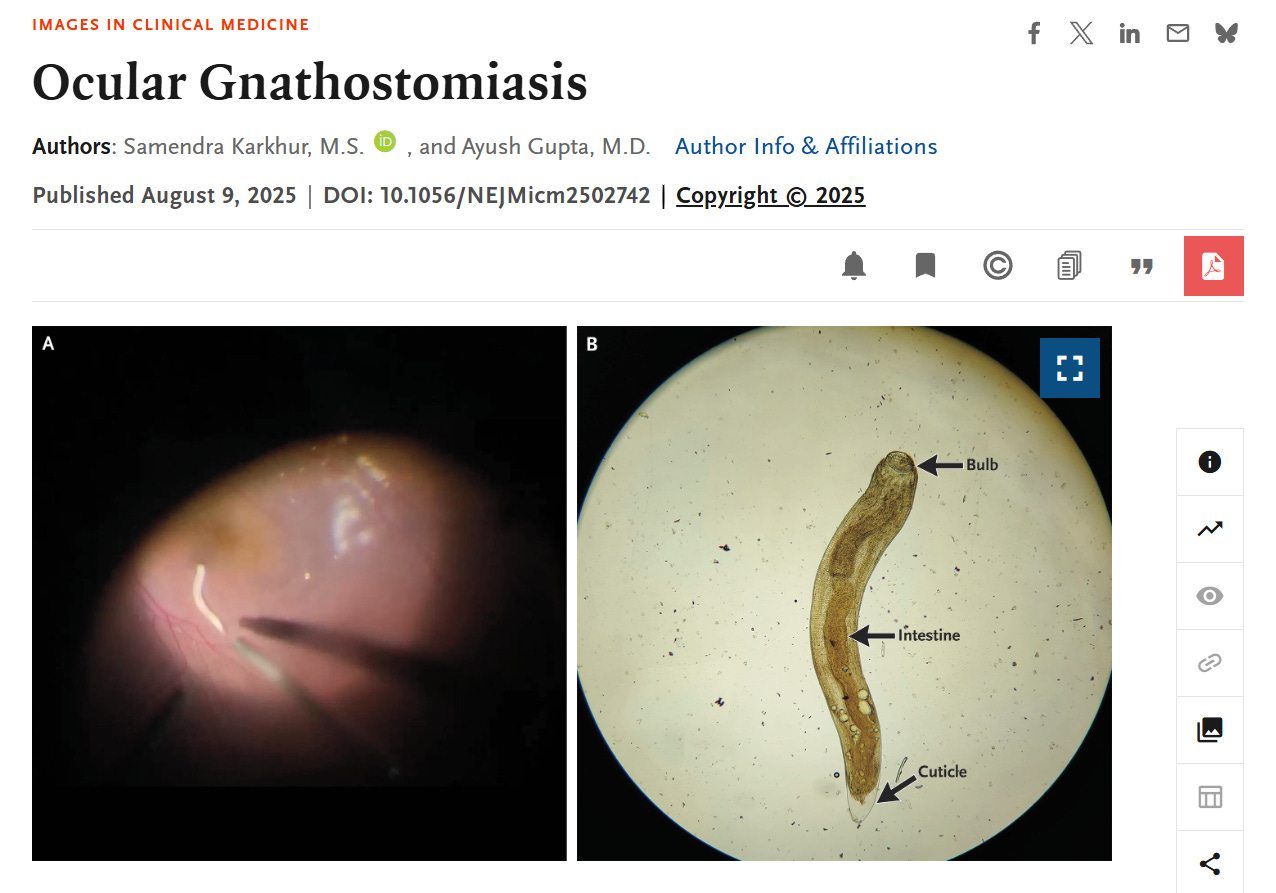Ocular Gnathostomiasis
Case for Prompt Recognition and Treatment of Human Parasites
By Peter A. McCullough, MD, MPH
A recent case report in the New England Journal of Medicine caught my attention:
A 35-year-old man presented to the ophthalmology clinic with an 8-month history of redness and blurry vision in the left eye. On physical examination, the left eye was found to have conjunctival injection and a fixed, dilated pupil. Visual acuity in the left eye was 20/80, and slit-lamp examination showed panuveitis. On funduscopy, a worm was seen moving sluggishly in the posterior segment. Examination of the skin and the rest of the neurologic system was normal. A pars plana vitrectomy was performed to remove the worm (Panel A and video). Under light microscopy, a larval-stage nematode with a cephalic bulb, thick cuticle, and well-developed intestine was identified (Panel B); these features were consistent with Gnathostoma spinigerum. Computed tomography of the brain, orbits, chest, abdomen, and pelvis was unremarkable. A diagnosis of ocular gnathostomiasis was made. Gnathostomiasis is acquired through ingestion of undercooked freshwater fish, poultry, snake, or frog in regions where the disease is endemic — the first two of which this patient from rural central India had consumed. Treatment with oral and ocular glucocorticoids was given because of the severity of the patient’s uveitis. A course of albendazole was also prescribed. At the 8-week follow-up, his symptoms had resolved but his visual acuity remained 20/40 in the left eye owing to the development of a cataract.
This makes the use case for the parasite cleanse product offered by The Wellness Company. Because his infection was diagnosed late and steroids were required, he has a permanent reduction in visual acuity. Future cataract surgery should handle it, however, the lesson learned is be alert to symptoms if they develop after eating raw or uncooked fish or meat.
Please subscribe to FOCAL POINTS as a paying ($5 monthly) or founder member so we can continue to bring you the truth.
Peter A. McCullough, MD, MPH
Chief Scientific Officer, The Wellness Company





An extremely rare case in the US. A fascinoma hence the case report.
perhaps a case can be made for SIMPLY not eating uncooked flesh of these sorts.